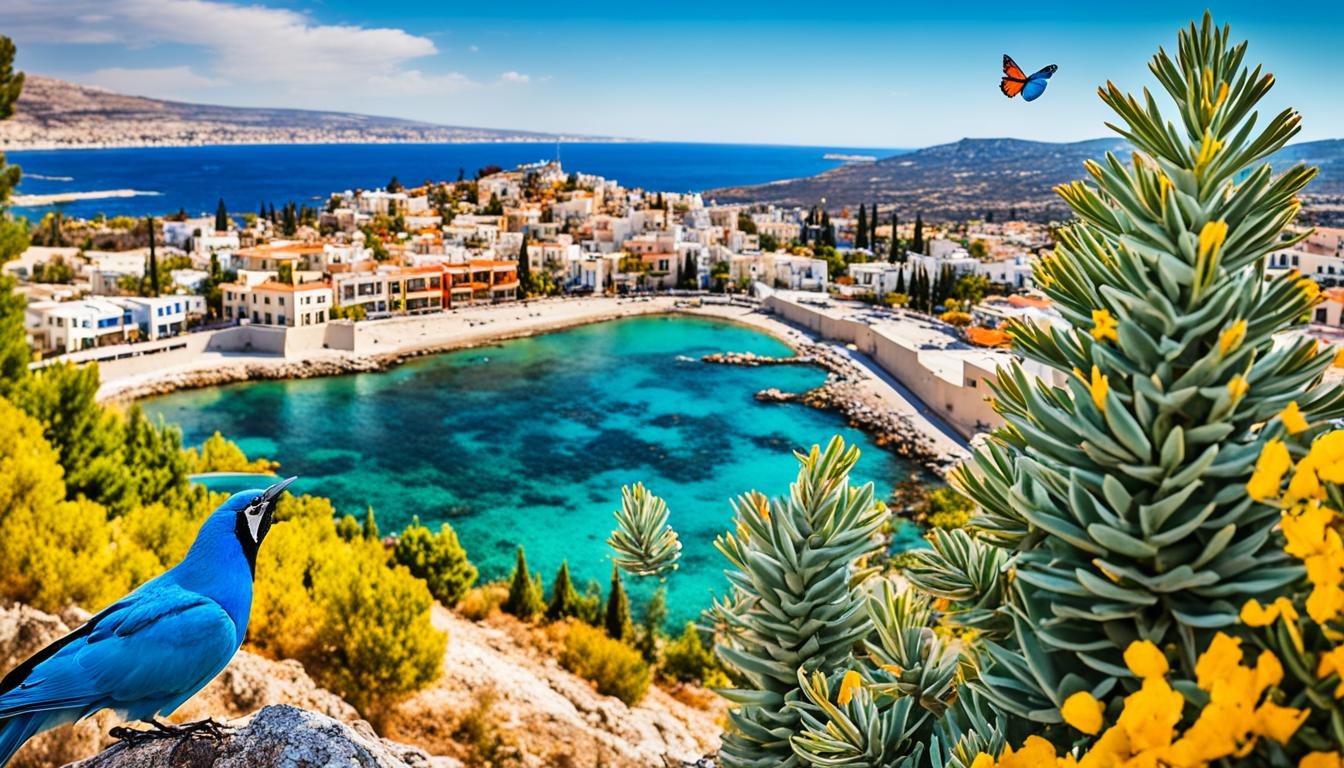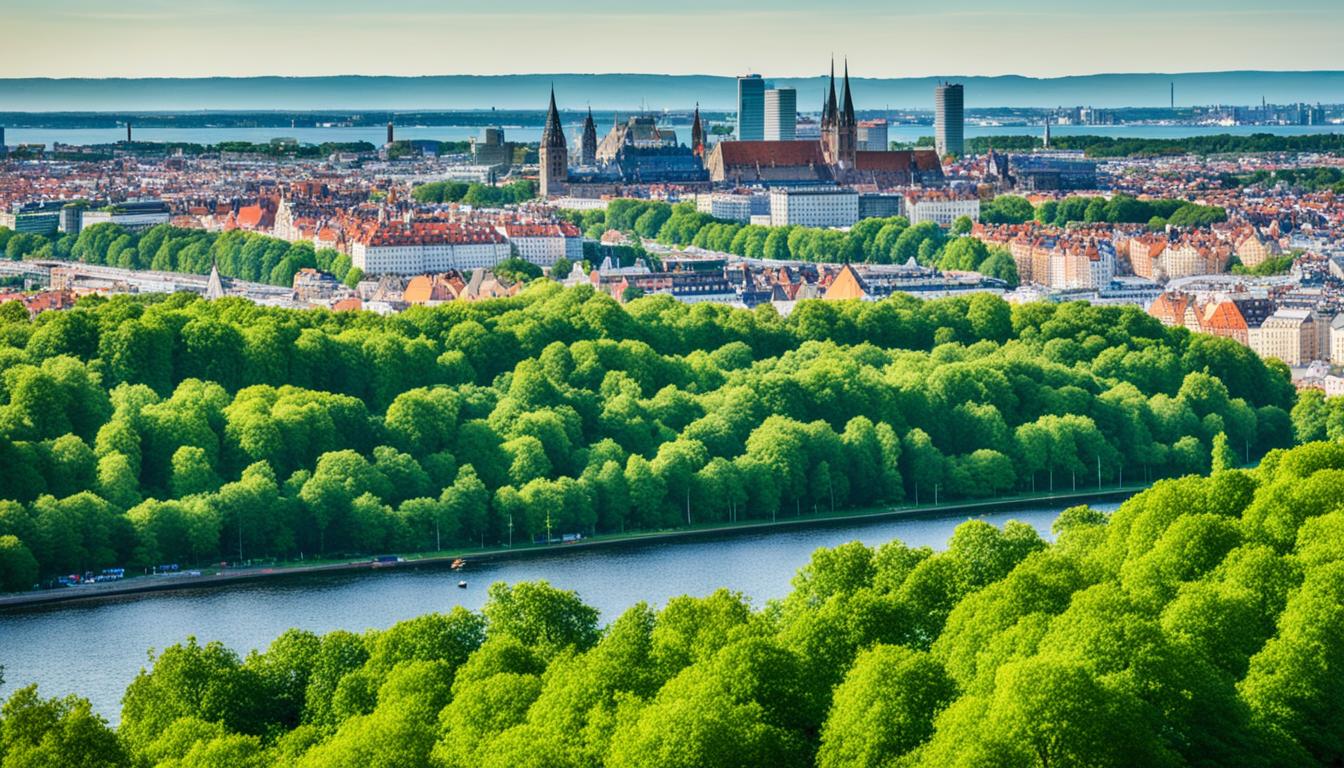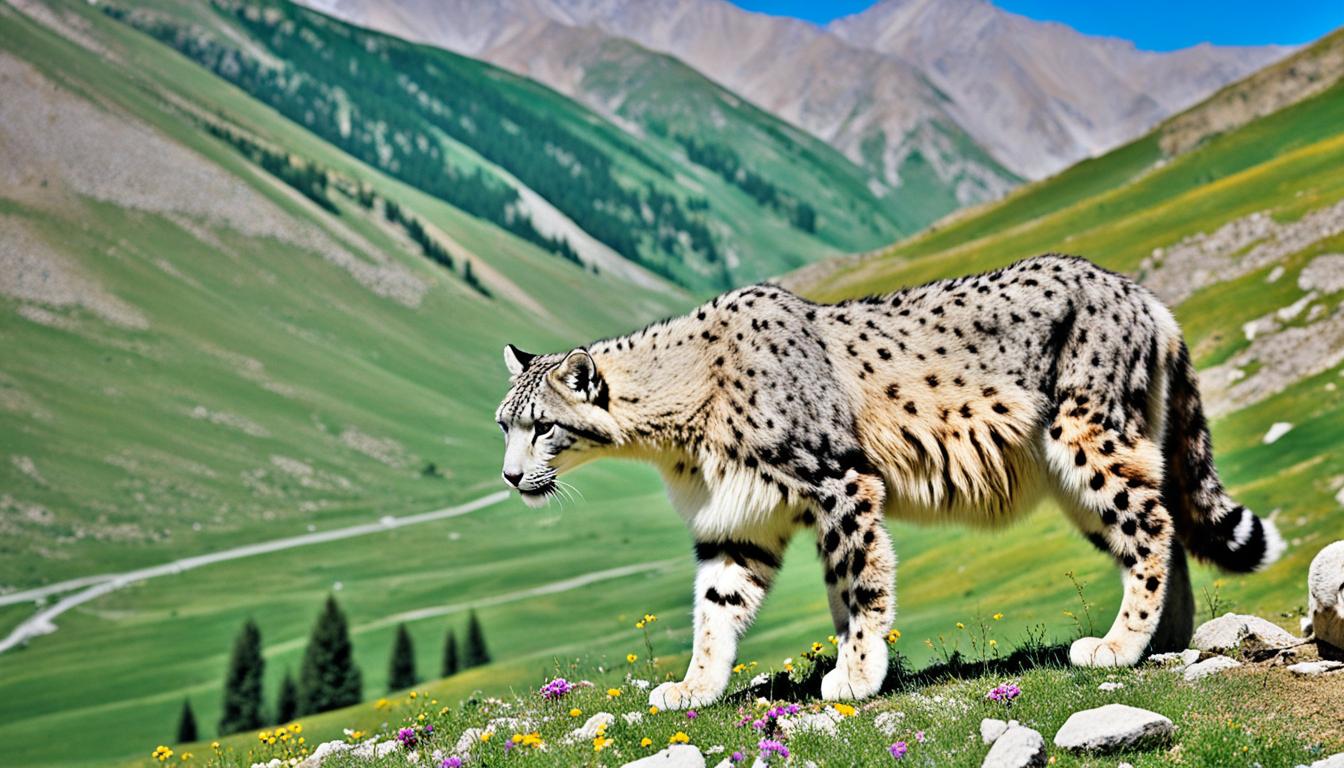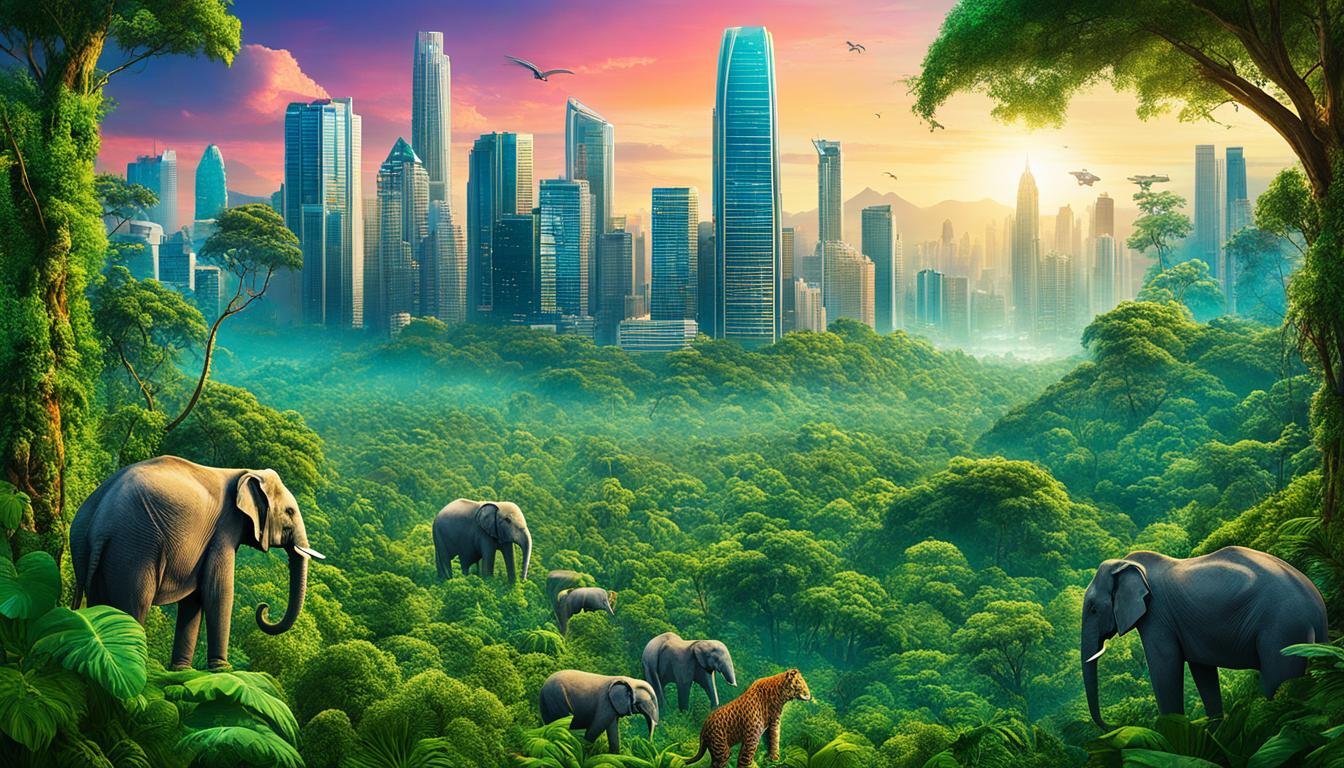Democratic Republic of the Congo Biodiversity and the Built Environment
The Democratic Republic of the Congo (DRC) is recognized as one of the world’s 10 mega-biodiverse countries, with a high rate of endemism and valuable freshwater, forest, and soil resources. However, severe demographic and economic pressures, as well as unsustainable resource use, have negatively impacted the environment, particularly in terms of deforestation and habitat destruction. The country is home to threatened species of fauna and flora, and pollution and biodiversity loss are also pressing concerns.
Key Takeaways
- The DRC is known for its rich biodiversity, including endemic species such as bonobos, mountain gorillas, and the okapi.
- Deforestation, habitat destruction, and climate change pose serious threats to biodiversity in the DRC.
- Sustainable architecture and urban planning are needed to mitigate the negative impacts on biodiversity and the environment.
- Forest conservation is crucial for preserving biodiversity in the DRC.
- International cooperation plays a crucial role in biodiversity conservation in the DRC.
Biodiversity in the Democratic Republic of the Congo
The Democratic Republic of the Congo (DRC) is renowned for its exceptional biodiversity. The country is home to a vast array of species, including bonobos, mountain gorillas, and the okapi, all of which are endemic to the region. The DRC’s expansive forests, which make up half of Africa’s total tropical rainforest area, provide a vital habitat for a diverse range of flora and fauna.
The incredible biodiversity found in the DRC is a result of its unique geographical location, varied climate, and diverse ecosystems. The country’s rich natural resources and fertile soil support a wide array of plant and animal life. From dense rainforests to vast wetlands, the DRC boasts a remarkable array of habitats that foster the growth and survival of numerous species.
However, the biodiversity in the DRC is facing significant threats. Anthropogenic factors, such as deforestation, habitat destruction, and climate change, are placing immense pressure on the fragile ecosystems and the species they support. Rising demand for timber, agricultural land, and mineral resources has led to rampant deforestation, resulting in the loss of critical habitats and pushing many species to the brink of extinction.
Climate change also poses a substantial threat to the biodiversity in the DRC. Increasing temperatures, altered rainfall patterns, and extreme weather events can disrupt delicate ecosystems and disrupt the balance of species interactions. These changes can have cascading effects on the entire ecosystem, endangering the survival of numerous plant and animal species.
“The Democratic Republic of the Congo is a biodiversity hotspot, housing unique and endangered species that play a crucial role in maintaining the ecological balance of the region. Preserving this biodiversity is not just about protecting wildlife; it is about securing the future of our planet’s natural heritage.”
To safeguard the biodiversity in the DRC, concerted efforts are required. Comprehensive conservation strategies must be implemented to combat deforestation, protect important habitats, and mitigate the impacts of climate change. Additionally, it is vital to engage local communities and stakeholders in conservation initiatives, promoting sustainable practices and ensuring the long-term viability of the country’s natural resources.
Endemic Species of the Democratic Republic of the Congo
| Species | Scientific Name | Status |
|---|---|---|
| Bonobo | Pan paniscus | Endangered |
| Mountain Gorilla | Gorilla beringei beringei | Endangered |
| Okapi | Okapia johnstoni | Endangered |
The Democratic Republic of the Congo is home to several endemic species that are found nowhere else on Earth. The table above highlights some of the iconic endemic species in the DRC and their conservation status. These species face significant threats, and their survival depends on concerted conservation efforts aimed at preserving their natural habitats and ensuring the long-term viability of their populations.
Challenges to Biodiversity Conservation in the DRC
The Democratic Republic of the Congo (DRC) faces numerous challenges in conserving its biodiversity. The unique flora and fauna of the DRC are threatened by various factors, including deforestation, poaching, pollution, and the introduction of invasive species.
The Challenges
Deforestation: The DRC’s forests are under immense pressure due to population growth and unsustainable resource use. The clearance of land for agriculture, logging, and urbanization contributes to habitat destruction and loss of biodiversity.
Poaching: Wildlife in the DRC is targeted by poachers for the illegal wildlife trade. Endangered species, such as gorillas and elephants, are particularly vulnerable to poaching, which further threatens their populations.
Commercialization of Bushmeat: The commercialization of bushmeat, the hunting and trading of wild animals for food, poses a significant threat to the DRC’s biodiversity. Unsustainable hunting practices can deplete populations and disrupt ecosystems.
Pollution of Water Resources: The pollution of water resources in the DRC damages aquatic ecosystems and affects the biodiversity they support. Industrial pollution, mining activities, and improper waste management contribute to the degradation of water quality.
Invasive Alien Species: The introduction of invasive alien species into the DRC can disrupt native ecosystems and outcompete native species for resources. These non-native species can have devastating effects on biodiversity, altering ecosystems and threatening local flora and fauna.
Additional Challenges
The challenges to biodiversity conservation in the DRC are further compounded by a lack of sufficient legislation, inadequate taxonomic inventories, and the absence of an emergency plan and national rapid alert system. The DRC requires stronger measures and comprehensive strategies to address these challenges and protect its unique biodiversity.
| Challenges | Impact on Biodiversity |
|---|---|
| Deforestation | Loss of habitat for flora and fauna |
| Poaching | Threatened populations of endangered species |
| Commercialization of Bushmeat | Depletion of animal populations and disruption of ecosystems |
| Pollution of Water Resources | Destruction of aquatic ecosystems and biodiversity loss |
| Invasive Alien Species | Disruption of native ecosystems and threat to local species |
It is crucial for the DRC to address these challenges in order to protect its Congo biodiversity and ensure the long-term sustainability of its environmental resources. By implementing effective conservation strategies, the DRC can safeguard its unique ecosystems and preserve the wealth of biodiversity it possesses.
Sustainable Architecture and Urban Planning in the DRC
In order to mitigate the negative impacts on biodiversity and the environment, there is a need for sustainable architecture and urban planning in the Democratic Republic of the Congo (DRC). By incorporating sustainable practices in the design and construction of buildings, using energy-efficient materials and systems, and integrating green spaces into urban areas, the DRC can create a more eco-friendly and resilient built environment.
Sustainable architecture focuses on reducing energy consumption, minimizing waste generation, and promoting the use of renewable resources. By implementing energy-efficient technologies such as solar panels, rainwater harvesting systems, and natural ventilation, buildings can reduce their carbon footprint and contribute to the overall environmental sustainability of the DRC. Additionally, the use of sustainable materials, such as locally sourced timber, recycled metals, and eco-friendly insulation, helps to lower the embodied energy and environmental impact of construction projects.
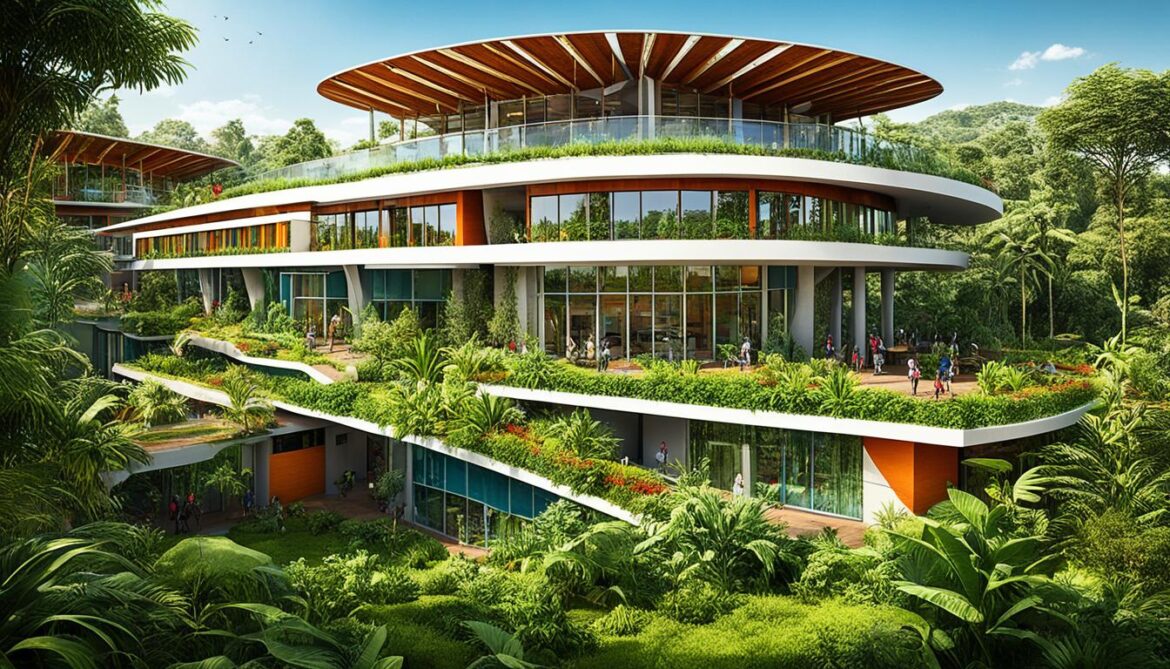
Urban planning plays a vital role in safeguarding the biodiversity and natural ecosystems of the DRC. By preserving natural habitats, creating green corridors, and promoting urban agriculture, urban planning can help maintain ecological balance and support the conservation of indigenous species. Furthermore, integrating sustainable transportation systems, such as public transit networks and cycling infrastructure, helps reduce reliance on private cars and decrease air pollution in urban areas.
Effective waste management and pollution control are also crucial components of sustainable urban planning in the DRC. Implementing recycling programs, wastewater treatment plants, and green building certifications can contribute to creating healthier and more sustainable cities. By encouraging sustainable practices and providing the necessary infrastructure, the DRC can pave the way for a greener and more environmentally conscious future.
The Benefits of Sustainable Architecture and Urban Planning in the DRC
The adoption of sustainable architecture and urban planning practices in the DRC offers several benefits:
- Environmental Protection: By reducing energy consumption, promoting green spaces, and managing waste effectively, sustainable architecture and urban planning contribute to the preservation of the DRC’s unique biodiversity and ecosystems.
- Enhanced Quality of Life: Sustainable buildings and well-planned urban areas provide healthier and more comfortable living environments, promoting physical and mental well-being for residents.
- Economic Opportunities: The development of sustainable architecture and urban planning creates job opportunities in the construction industry and stimulates economic growth through investments in renewable energy, efficient infrastructure, and green technologies.
- Climate Change Mitigation: Sustainable buildings and urban areas help reduce greenhouse gas emissions by relying on renewable energy sources, minimizing resource consumption, and adopting climate-resilient design principles.
By prioritizing sustainable architecture and urban planning, the DRC can pave the way for a more environmentally friendly and resilient future. The integration of ecological considerations into urban development and construction practices will not only help protect the country’s rich biodiversity but also create healthier and more livable cities for its growing population.
Forest Conservation in the DRC
Forest conservation plays a vital role in preserving the rich biodiversity of the Democratic Republic of the Congo (DRC). The country’s vast forests are not only home to numerous species but also provide essential ecosystem services. It is crucial to take concerted efforts to combat deforestation, promote sustainable forestry practices, and support local communities in sustainable forest management.
The preservation and effective management of forest ecosystems are fundamental to ensuring the long-term sustainability of the DRC’s biodiversity and the built environment. By safeguarding these crucial habitats, we can protect endangered species, maintain biodiversity, and preserve the ecological balance that sustains our planet.
The Impact of Deforestation
Deforestation in the DRC poses a significant threat to both wildlife and the environment. It not only diminishes habitat for various animal and plant species but also contributes to climate change by releasing carbon dioxide stored in trees. Conserving forests is key to mitigating these adverse effects and safeguarding the delicate balance of our ecosystems.
Promoting Sustainable Forestry
To combat deforestation, the DRC must adopt sustainable forestry practices. This involves ensuring responsible logging, reforestation efforts, and the protection of old-growth forests. By encouraging sustainable forestry, we can meet our timber needs while minimizing the environmental impact.
Supporting Local Communities
An inclusive approach to forest conservation involves supporting local communities in sustainable forest management. Empowering local stakeholders, including indigenous peoples, provides them with the resources and knowledge needed to protect their natural heritage. By involving communities, we foster a sense of ownership and stewardship, ensuring the long-term preservation of forest ecosystems.
Preserving the forests of the DRC is not only a crucial step in preserving the country’s unique biodiversity but also an essential component of global efforts to combat climate change and sustain our planet’s delicate ecosystems.
| Benefits of Forest Conservation in the DRC | Actions for Forest Conservation |
|---|---|
|
|
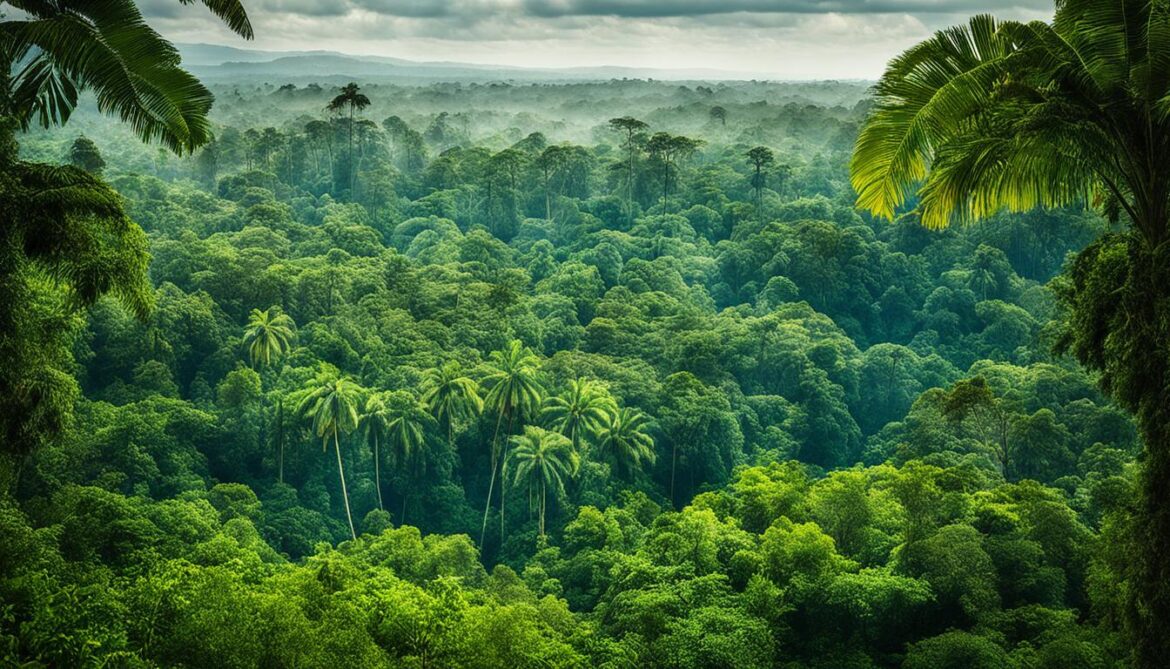
Protecting the forests of the Democratic Republic of the Congo is a shared responsibility. By joining hands, we can create a sustainable future that safeguards both the remarkable biodiversity of the region and the well-being of local communities whose lives depend on the forests. Together, we can ensure the conservation of this invaluable natural heritage for generations to come.
Efforts to Enhance Implementation of Conservation Measures
In the Democratic Republic of the Congo (DRC), concerted efforts are being made to enhance the implementation of conservation measures in order to protect the country’s rich biodiversity and promote sustainable development in the built environment. These measures include:
- Development of a National Biodiversity Strategy and Action Plan: The DRC has created a comprehensive strategy and action plan to guide biodiversity conservation efforts. This plan lays out specific goals, objectives, and activities to protect and conserve the diverse ecosystems and species found within the country.
- Establishment and Revision of Management Plans: The DRC is actively working on developing and revising management plans for national parks and protected areas. These plans serve as blueprints for effective ecosystem management and provide guidelines for sustainable use of natural resources while minimizing impacts on the environment.
- Improved Knowledge of Ecosystems and Taxonomic Groups: Enhanced scientific research and monitoring efforts are being undertaken to improve our understanding of the DRC’s ecosystems and taxonomic groups. This increased knowledge allows for more informed conservation decision-making and targeted interventions.
- Involvement of Local Communities: Recognizing the importance of engaging local communities in conservation efforts, the DRC is actively involving them in decision-making processes, awareness campaigns, and sustainable resource management practices. This collaborative approach promotes social inclusion, empowers communities, and ensures the long-term success of conservation initiatives.
- Promotion of Eco-Tourism: The DRC sees the potential of eco-tourism as a means to generate economic benefits while also protecting biodiversity. Efforts are being made to promote responsible and sustainable tourism practices, highlighting the country’s unique natural heritage and attracting visitors who value the conservation of the environment.
- Cooperation with Ministries, Stakeholders, and NGOs: To ensure the effective implementation of conservation measures, the DRC is strengthening collaboration with relevant ministries, stakeholders, and non-governmental organizations (NGOs). This multi-sectoral approach fosters synergy, knowledge sharing, and resource mobilization towards achieving common conservation goals.
The Democratic Republic of the Congo recognizes the importance of preserving its biodiversity and safeguarding the built environment for future generations. By implementing these conservation measures and fostering collaborative partnerships, the DRC is taking significant strides towards sustainable development in harmony with its natural heritage.
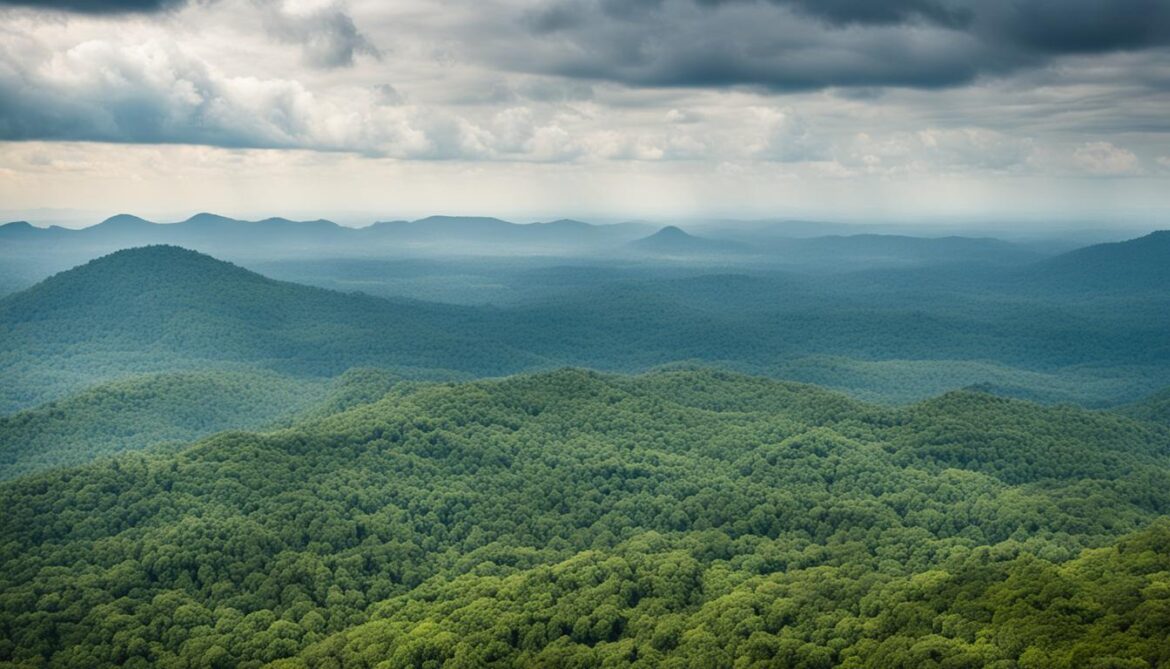
Climate Change and Biodiversity in the DRC
Climate change poses additional challenges to biodiversity conservation in the Democratic Republic of the Congo (DRC). The impacts of climate change, such as increases in temperature, extreme weather events, and changes in precipitation patterns, can have detrimental effects on ecosystems and threaten the survival of species.
Integrating climate change adaptation and mitigation strategies into biodiversity conservation efforts is crucial to protect the DRC’s unique flora and fauna. By addressing the impacts of climate change on biodiversity, we can safeguard the rich natural heritage of the DRC and ensure the long-term sustainability of its ecosystems.
The Impact of Climate Change on Biodiversity
Climate change in the DRC has the potential to disrupt ecosystems and impact biodiversity in several ways:
- Changes in Temperature: Rising temperatures can lead to shifts in the geographical range of species, affecting their distribution and reducing suitable habitats.
- Extreme Weather Events: More frequent and intense extreme weather events, such as storms and floods, can result in habitat destruction, loss of biodiversity, and population declines.
- Altered Precipitation Patterns: Changes in rainfall patterns can affect the availability of water resources, which are crucial for the survival of many species and the functioning of ecosystems.
These impacts can have cascading effects, disrupting ecological processes and leading to the loss of important ecosystem services that support human societies, such as water purification, carbon sequestration, and climate regulation.
Addressing Climate Change and Biodiversity Conservation
To protect biodiversity in the face of climate change, it is important to take proactive steps and implement adaptive measures:
- Conservation of Natural Habitats: Preserving intact and diverse habitats, such as forests and wetlands, helps to maintain ecosystem resilience and provides refuges for species.
- Ecological Restoration: Restoring degraded ecosystems and enhancing habitat connectivity can facilitate species movement and reduce the vulnerability of biodiversity to climate change.
- Sustainable Land Use Practices: Promoting sustainable agricultural practices and responsible land management reduces deforestation, protects natural ecosystems, and contributes to climate change mitigation.
- Capacity Building: Enhancing local communities’ capacity for climate change adaptation and biodiversity conservation through education, training, and knowledge sharing strengthens resilience at the local level.
“The conservation of biodiversity in the DRC is intricately linked to addressing the challenges posed by climate change. By integrating climate adaptation and mitigation strategies into conservation efforts, we can safeguard the unique flora and fauna of the DRC for future generations.” – Dr. Jeanne Mbombo, Conservation Biologist
Efforts to address climate change and preserve biodiversity in the DRC require collaboration among governments, conservation organizations, local communities, and international stakeholders. Through joint actions and collective responsibility, we can work towards a sustainable future that protects the Democratic Republic of the Congo’s invaluable natural heritage.
| Key Challenges | Adaptive Measures |
|---|---|
| Increases in temperature | Conservation of natural habitats |
| Extreme weather events | Ecological restoration |
| Altered precipitation patterns | Sustainable land use practices |
| Capacity building |
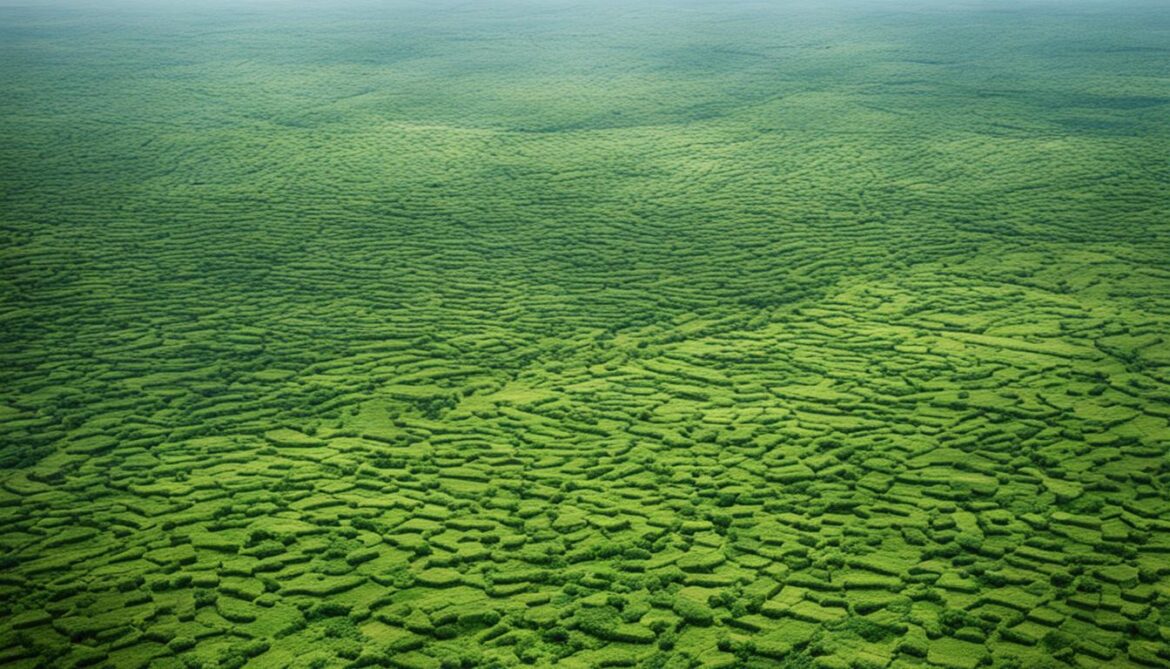
Role of International Cooperation in Biodiversity Conservation
International cooperation plays a crucial role in the conservation of biodiversity in the Democratic Republic of the Congo (DRC). Through partnerships with international organizations, donor countries, and non-governmental organizations (NGOs), the DRC receives support in the form of funding, knowledge sharing, technical assistance, and capacity building. This collaboration is instrumental in protecting the unique wildlife, ecosystems, and natural resources of the DRC.
The importance of international cooperation can be seen in various initiatives focused on wildlife conservation in the Congo. Countries from around the world come together to establish transboundary protected areas, which help to safeguard critical habitats that span national borders. These protected areas not only support the survival of endangered species but also promote regional cooperation and foster peace through shared conservation efforts.
“The strength of international cooperation lies in its ability to tackle common challenges and find sustainable solutions. By working together, we can protect the biodiversity of the Democratic Republic of the Congo and ensure its preservation for future generations.”
Another significant aspect of international cooperation is the promotion of sustainable trade and investments. By aligning economic activities with biodiversity conservation, countries can contribute to the long-term sustainability of the DRC’s ecosystems. This includes supporting responsible tourism practices, sustainable agricultural initiatives, and environmentally friendly investments that prioritize ecosystem management and protection.
Collaboration also extends to research and monitoring initiatives. Through partnerships with international scientists and researchers, the DRC can enhance its understanding of its unique biodiversity and ecosystems. This knowledge allows for evidence-based decision-making in conservation efforts and aids in the development of effective strategies to mitigate threats to wildlife and their habitats.
International Cooperation for Biodiversity Conservation in the DRC: A Case Study
One noteworthy example of international cooperation in biodiversity conservation is the partnership between the DRC and the United Nations Development Programme (UNDP). Through the Global Environment Facility-funded project, the UNDP has been working closely with the DRC’s Ministry of Environment, Nature Conservation, and Sustainable Development to support ecosystem management and biodiversity conservation.
This collaboration has resulted in the establishment and strengthening of protected areas, the development of sustainable land use practices, and the capacity building of local communities in sustainable resource management. By combining local knowledge and international expertise, this partnership has made significant strides in preserving the biodiversity of the DRC and promoting sustainable development within the country.
| Benefits of International Cooperation in Biodiversity Conservation: | Examples: |
|---|---|
| Access to funding for conservation efforts | Partnership with international organizations and donor countries |
| Shared knowledge and technical expertise | Collaborations with NGOs and international scientists |
| Capacity building for local communities | Support for sustainable land use and resource management |
| Transboundary cooperation for protected areas | Establishment of transboundary protected areas |
| Promotion of sustainable trade and investments | Partnerships for responsible tourism and sustainable agriculture |
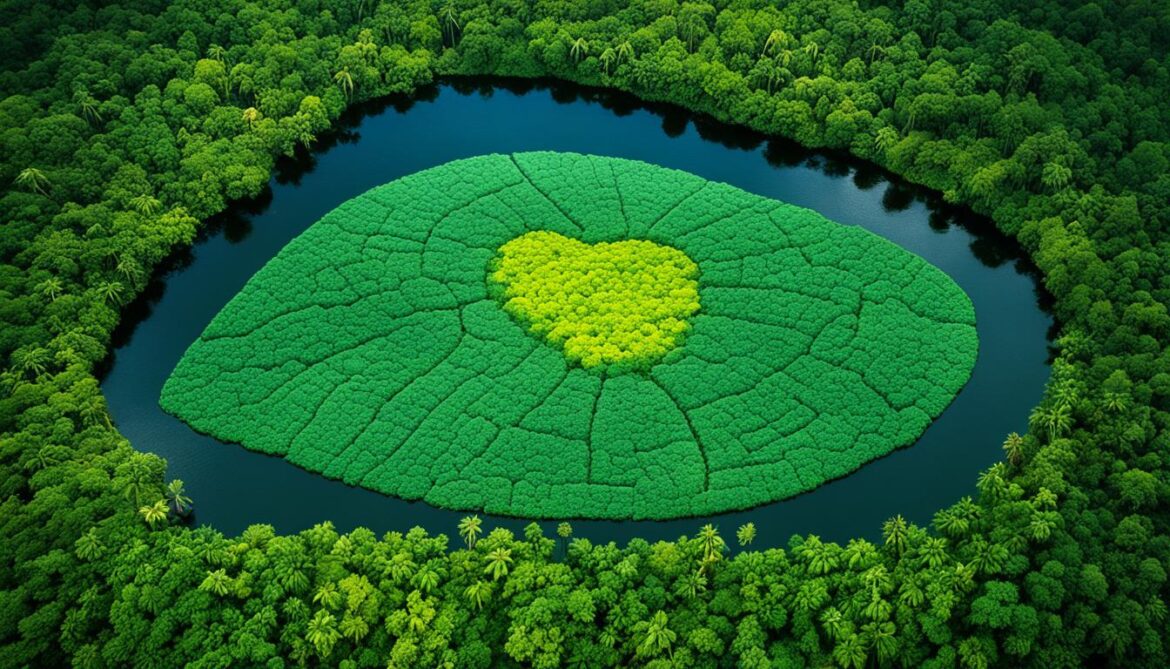
The role of international cooperation in biodiversity conservation in the DRC cannot be overstated. By joining forces with global partners, the country can effectively address the complex challenges it faces in protecting its rich wildlife, ecosystems, and natural resources. Through continued collaboration and support, the DRC can pave the way for a sustainable future in which biodiversity and the built environment thrive harmoniously.
The Democratic Republic of the Congo’s Climate Priorities
The Democratic Republic of the Congo (DRC) recognizes the urgency of addressing climate change and has made it a top priority in its national policies and commitments. The country has ratified key international agreements including the United Nations Framework Convention on Climate Change, the Kyoto Protocol, and the Paris Agreement.
With a clear focus on reducing greenhouse gas emissions and building resilience to climate change impacts, the DRC’s climate priorities encompass vital sectors such as energy, agriculture, forestry, and waste management.
Efforts to reduce greenhouse gas emissions in the energy sector involve transitioning to renewable sources of energy, improving energy efficiency, and implementing sustainable practices.
In agriculture, the DRC aims to promote climate-smart practices such as agroforestry, sustainable land management, and the use of climate-resilient crop varieties. These approaches help farmers adapt to changing climatic conditions while mitigating agricultural emissions.
Forestry plays a crucial role in the DRC’s climate priorities as the country is home to vast areas of tropical rainforest. Sustainable forest management, reforestation programs, and the protection of forest ecosystems are key strategies to mitigate climate change and conserve biodiversity.
Effective waste management systems are essential for reducing emissions from landfill sites and promoting sustainable waste practices. The DRC is committed to implementing waste management strategies that prioritize recycling, composting, and the reduction of waste generation.
Climate Resilience Building
Building resilience to climate change impacts is equally important for the DRC. The country aims to enhance adaptive capacities in various sectors, such as agriculture, water resources management, and infrastructure development.
Adapting agricultural practices to changing climatic conditions involves promoting drought-resistant crops, efficient irrigation techniques, and climate information services for farmers. Additionally, the DRC seeks to strengthen water resource management by improving water storage facilities, implementing flood control measures, and enhancing water efficiency.
Infrastructure development in the DRC is guided by climate-resilient principles. This includes designing and constructing resilient buildings and transport systems that can withstand extreme weather events and accommodate changing climate patterns.
Overall, the DRC’s climate priorities reflect a comprehensive and strategic approach to addressing climate change. By focusing on emissions reduction and climate resilience building, the DRC aims to safeguard its natural resources, protect vulnerable communities, and contribute to global climate action.
| Sector | Climate Priorities |
|---|---|
| Energy | Transition to renewable energy sources, improve energy efficiency, and implement sustainable practices. |
| Agriculture | Promote climate-smart practices, such as agroforestry and sustainable land management. |
| Forestry | Implement sustainable forest management and protect forest ecosystems. |
| Waste Management | Implement waste management strategies that prioritize recycling and composting. |
| Adaptation | Enhance adaptive capacities in sectors such as agriculture, water resources management, and infrastructure development. |
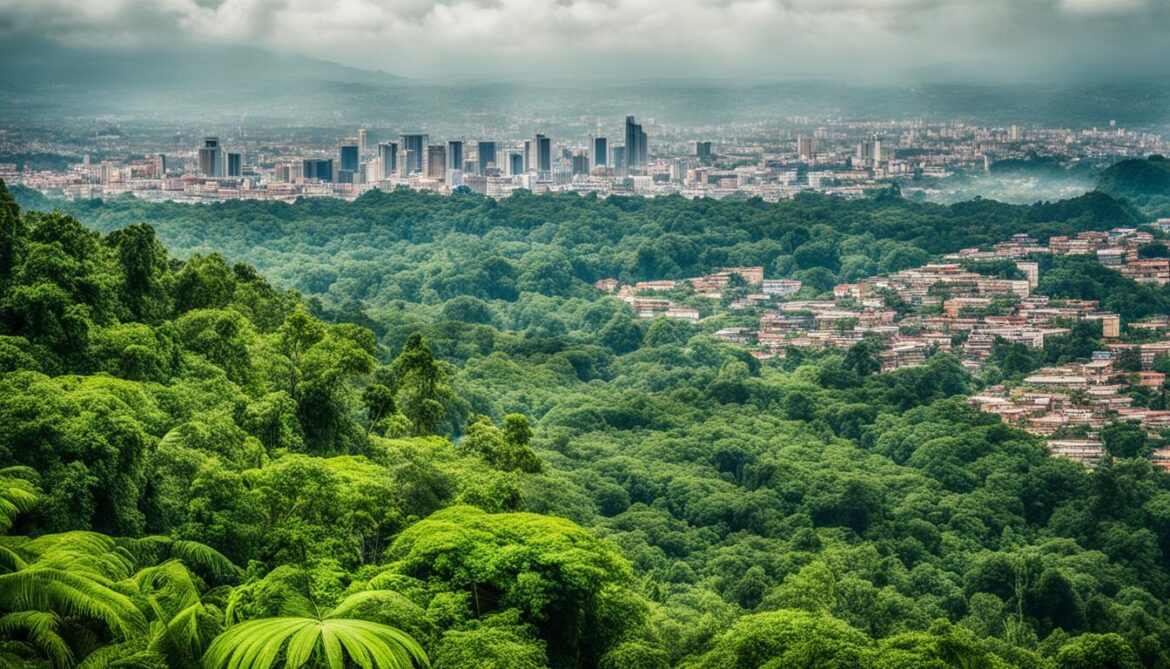
“Climate change is a global challenge that requires collective action. The Democratic Republic of the Congo is committed to playing its part in mitigating greenhouse gas emissions and building resilience to climate change impacts.”
USAID’s Efforts in Climate Change and Biodiversity in the DRC
USAID is playing a crucial role in supporting the government of the Democratic Republic of the Congo (DRC) in their efforts to address climate change and biodiversity conservation. Through a range of programs and partnerships, USAID is working towards promoting sustainable practices and protecting the unique natural resources of the DRC.
Renewable Energy Initiatives
One of the key areas of focus for USAID in the DRC is supporting renewable energy initiatives. By promoting the adoption of clean and sustainable energy sources, such as solar power and hydropower, USAID aims to reduce greenhouse gas emissions and improve access to clean energy for communities across the country. These initiatives not only contribute to climate change mitigation but also promote sustainable development.
Climate-Smart Agriculture
USAID recognizes the importance of climate-smart agriculture in the DRC, where agriculture plays a significant role in the economy and livelihoods of many people. Through training and capacity-building programs, USAID is helping farmers adopt sustainable and climate-resilient agricultural practices. This includes techniques like conservation agriculture, agroforestry, and soil and water conservation, which not only enhance agricultural productivity but also contribute to climate change adaptation.
Sustainable Land Use Management
To address the challenges of deforestation and habitat destruction, USAID supports sustainable land use management in the DRC. This involves working with local communities, government agencies, and civil society organizations to develop land use plans that prioritize conservation and ecosystem restoration. By promoting sustainable forestry practices and land use regulations, USAID aims to preserve natural habitats and protect the biodiversity of the DRC.
Promoting Natural Climate Solutions
Natural climate solutions, such as forest conservation and restoration, play a vital role in mitigating climate change and preserving biodiversity. USAID is actively involved in promoting natural climate solutions in the DRC by supporting initiatives that focus on sustainable forest management, reforestation, and the conservation of critical ecosystems. These efforts not only help sequester carbon dioxide from the atmosphere but also protect the valuable biodiversity of the DRC’s forests.
Conserving Natural Resources
USAID’s programs in the DRC also aim to conserve natural resources, including freshwater, soil, and wildlife. By implementing sustainable resource management practices and supporting the establishment of protected areas, USAID is working towards the long-term preservation of the DRC’s natural heritage. These conservation efforts are essential for maintaining ecosystem services, safeguarding the livelihoods of local communities, and protecting the biodiversity of the DRC.
Through its various initiatives and partnerships, USAID is making a significant impact on climate change mitigation and biodiversity conservation in the DRC. By promoting renewable energy, climate-smart agriculture, sustainable land use management, and natural climate solutions, USAID is helping the DRC build resilience to climate change and protect its unique biodiversity for future generations.
Conclusion
The Democratic Republic of the Congo (DRC) faces significant challenges in conserving its rich biodiversity and promoting sustainable development. The country is known for its diverse ecosystems and endemic species, but factors such as deforestation, poaching, and pollution pose threats to its unique wildlife and natural resources.
To address these challenges, efforts in biodiversity conservation are crucial. By implementing sustainable architecture and urban planning, the DRC can minimize its environmental impact and preserve its ecosystems. Forest conservation plays a vital role, as the country’s rainforests are home to numerous species and provide essential ecosystem services.
In addition, adapting to and mitigating climate change is essential for safeguarding the DRC’s biodiversity. Integrating climate change strategies into conservation efforts will help protect species and ecosystems from the detrimental effects of increasing temperatures and extreme weather events.
International cooperation is key to the success of these conservation efforts. Collaborating with organizations such as USAID provides vital support in terms of funding, knowledge sharing, and capacity building, enabling the DRC to make progress in safeguarding its biodiversity and promoting sustainable development for future generations.




